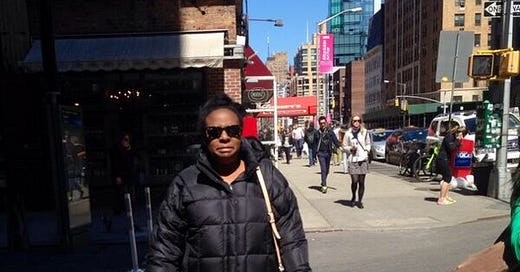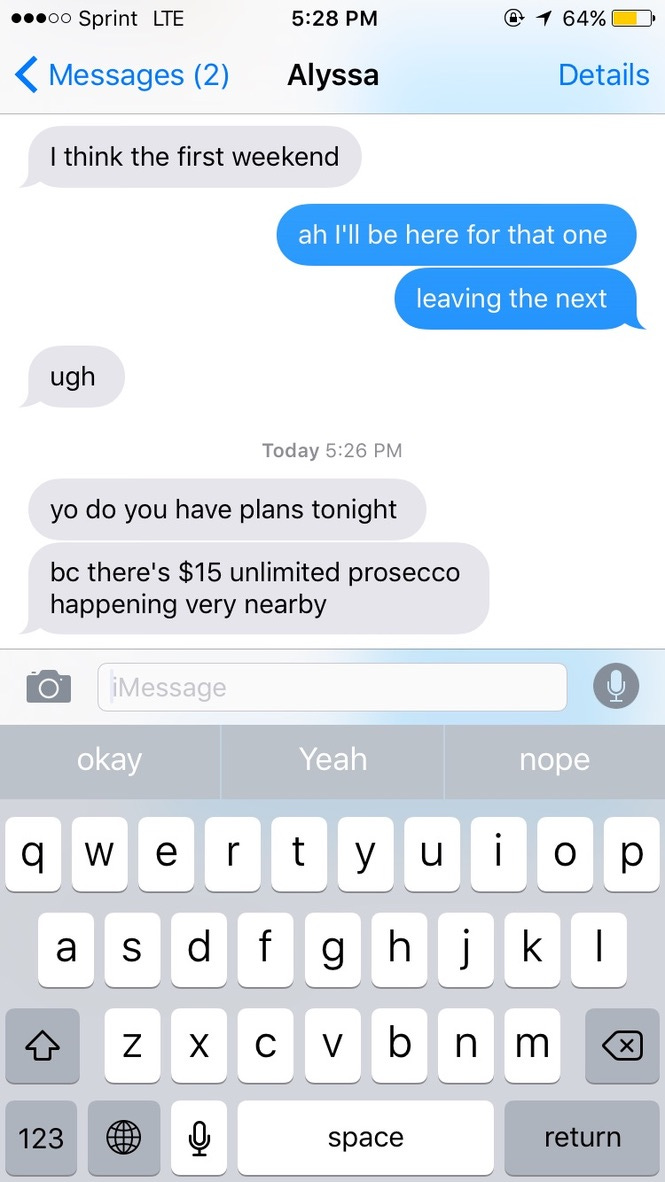It Must Be Nice to Experience New York Without Investing in It
On West Village girlies, gentrification, and why “just being a girl” isn’t neutral
This July marks nine years since I moved to New York—nearly ten if you count the seven months I spent here during college. I've spent most of my adult life in this city, almost as long as I lived in my hometown as a kid. My family moved to Englewood, Ohio, a suburb northwest of Dayton when I was in third grade. I left for college and never moved back.
New York is home, although I'm not from here. And that distinction matters.
On Monday, Brock Colyar's piece in New York Magazine titled "It Must Be Nice to Be a West Village Girl" lit up the internet. It explores how a new generation of young women has reshaped the fantasy of New York living in one of the city's most notable neighborhoods. If you've been online this week, you've seen the takes. A lot of them ignore the real issue: not the girls themselves but the sameness, privilege, and erasure they represent.
My first apartment in New York was in Chelsea on 15th and 7th. I was just a few blocks away from the West Village. I participated in a Study Away program through Kent State for a semester and stayed in the city the following summer. Before TikTok and influencer-driven migration patterns, I was part of the classic Midwest-to-NYC transplant pipeline in 2014. As a college student, I ate at Grey Dog, was recognized at J's Pizza, and had no idea what Via Carota was. Carbone didn't even enter my vocabulary until Drake mentioned it in 2017.
Occasionally, I'd take the 2 or 3 train to Atlantic Avenue to shop at one of the few Target stores in the city and eat at Buffalo Wild Wings. My roommate Natalie and I called it "Ohio Day"—embarrassing in hindsight, but we were 20. You see how we found comfort in the familiar without expecting the city to cater to us? Very demure, very mindful. I can’t be from here because I’m a Midwesterner who loves a chain restaurant. I would get a Triple Dipper® at Chili’s right now.
I occasionally went out in the West Village, primarily to NYU bars like 3 Sheets and Off The Wagon. I drank gin and tonics, not espresso martinis. Meals were cheap! $25 boozy brunch at Epstein's Bar on the LES (RIP) and margaritas at Blockheads (also RIP).
After a year-long stint in Chicago after graduation, I returned to NYC and got a job at Condé Nast, making $55,000. My parents were no longer paying my rent, so I moved into a three-bedroom off Ralph Avenue in Bed-Stuy with people from college. Most of my coworkers didn't know where that was. They looked confused or uninterested when I told them because it wasn't one of the two Brooklyn neighborhoods they deemed acceptable.
That was a humbling time. I'd grown up comfortably in a suburban area where everything was easily accessible. My first NYC experience in Chelsea felt similar. I had access to trains, museums, bars, and restaurants, all within walking distance. That changed quickly. Suddenly, I lived in a neighborhood with limited grocery stores and few restaurants. If I wanted to go out, I had to leave. I remember the VP of our department asking why I had Amazon packages sent to the office. She was confused that I didn't have a doorman. She also knew exactly how much money I made. That was a microaggression, but we move!
I lived in a real Brooklyn neighborhood. There were block parties that didn’t go viral online, long-time residents, and people who smiled and said good morning. It was their home. I was the transplant.
The snobbery I encountered at work gave me an inferiority complex, but over time, it shifted. I learned how to take the bus through Brooklyn, a skill I still use. I understood what it meant to live without convenience and how to build a community without proximity to the "right" places. I became a better neighbor.
Later, I moved to Prospect Lefferts Gardens, also known as Flatbush. Caribbean families and businesses surrounded me. I became a regular at the laundromat and deli across the street. My super was the best, and he still says hi when I run into him. I heard soca music for the first time. I watched the streets close for J'Ouvert. I left the neighborhood in 2019, and by 2021, there was a Target.
Eventually, I moved to Gramercy into my first solo apartment. I thought I had made it. I worked in tech and lived alone in a neighborhood where people didn't flinch when I said where I lived. Two of my college roommates lived nearby. I walked to my workout classes, office, drinks, and dinner. It was so convenient!
I also lived across from a strip mall with Chipotle, Walgreens, and Chase. Cafe Panna was in my neighborhood before it required waiting in line. But I didn't feel like I belonged. The neighborhood didn't reflect me. There weren't many people of color, and I spent most weekends socializing in Brooklyn. Gramercy offered comfort, but reminded me of the world I left in Ohio with a different backdrop.
One morning, I crossed the street in sweats to grab breakfast at Ess-a-Bagel and got a judgmental once-over from a fratty guy in line. It was familiar in the worst way.
At the end of 2021, I moved back to Bed-Stuy. I wanted to feel at home in my neighborhood again. Gentrification is everywhere, but it hasn't hit West Village levels here. There's a Chipotle down the block now. One-bedrooms are over $3,000. In 2016, I split a three-bedroom here for $2,700.
This isn't just about New York. Desirable neighborhoods everywhere are becoming reserved for people with money, and the radius keeps expanding. Even East New York is gentrifying. I can't say that I saw that coming.
I didn't move here to recreate my life in my hometown. I came here for opportunity, perspective, for people. The longer I stay in New York, the more I care. I volunteer, donate clothes and money, and support local businesses. I have my neighbor's phone numbers, go to readings, and meet the authors whose books I love. I enjoy some of the best art exhibits in the world and have so many different types of food at my fingertips.
The West Village girls are symbolic. The problem is the erasure of culture in favor of sameness. It's not about whether you love an Aperol Spritz or live in a doorman building. It's about whether you understand that this city isn't here to reflect you. You're supposed to grow here and add something to the culture. Too many people come for a curated experience and exit the chat when they're over it. If all your friends are white, all your favorite restaurants are trendy downtown spots, and none of your life connects to the actual DNA of the city, that proves the point.
And please stop saying you'd never raise a family here, as if no one ever has. Do you know how many people grew up here? They're often more interesting and exposed to the world than most adults in my hometown.
The backlash to Brock's piece is annoying. If your only takeaway is, "We should let the girls be girls," you missed the point. Yes, some of these women have monetized their personalities, which many of us aspire to. But we can't be naive about the cost in this context. Promoting the Village as a lifestyle brand might help the businesses in the area, but what does it do to the culture of a neighborhood that has historically been creative, queer, and resistant to monoculture?
What happens when the trend shifts and they all move to Raleigh? These choices have an impact, whether you think "the girls are just being girls" or not. To pretend otherwise is ignorance dressed up as empowerment. Now, we are tapping into why white feminism exhausts me, but let's not do all of that in this essay.
Even in my neighborhood, I hold the tension. I'm a Black woman who had a tech career and can now afford to rent a one-bedroom apartment in a historically Black area. That doesn't mean class doesn't apply to me. Capitalism is real. And we're all somewhere on the scale of privilege and power. But it's embarrassing if you can't acknowledge your place in it.
These shifts are happening not just in Manhattan but across the country. Neighborhoods are shifting into filtered, palatable versions of themselves.
These places had communities long before we showed up. They don't owe us comfort, but they need our support for the next generation of people who have dreams in New York before it becomes one big strip mall, where we are all dressed the same—AKA my hometown.
As always, thank you for reading Define Normal. You can always send me a message to continue the conversation! Otherwise, you can find me on IG, TikTok, or the Define Normal podcast.








Love it🙌🏾 Girls put the erasers down and celebrate the culture that is NYC❤️
Blockheads. Never forget.🥲
Only the real ones remember.